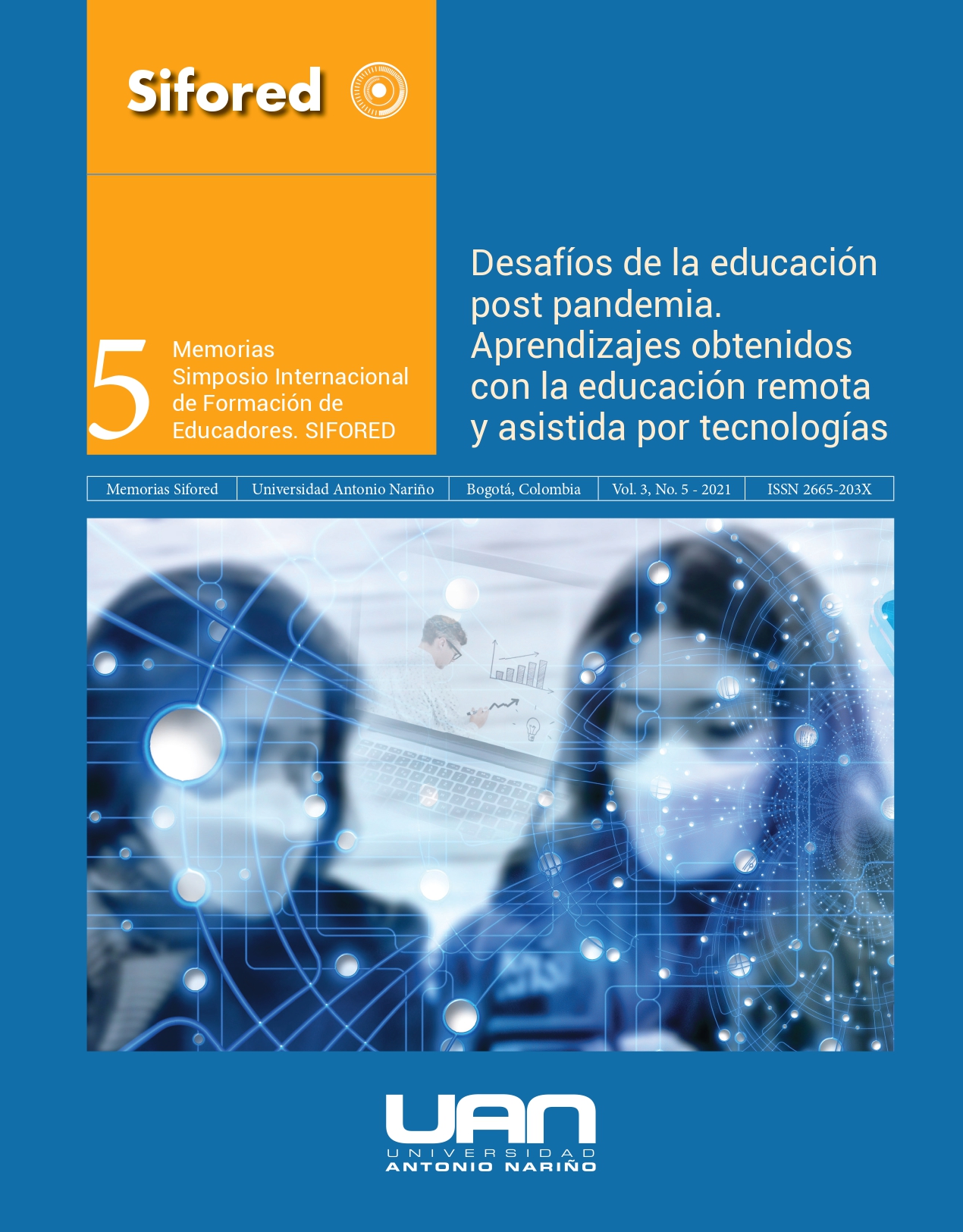Hilando la historia se teje la ruana: narrativas de identidad sociocultural del campesino boyacense, una experiencia para la construcción de didácticas de la investigación - creación
Keywords:
Research - creation, collective creation, artist - creator, master artist – researcher, ruanaAbstract
The development of didactics linked to acts of creation and the work of sensitive exploration in the body and thought from the collective, seeks to enhance the creative processes of the members of the Backú Artistic Collective, to generate a montage of research - creation that speaks of the ruana as a symbol of the prevalence of the Cundiboyacense peasant. Starting from creation laboratories that put into practice the method of collective creation proposed by Enrique Buenaventura and Santiago García.
The collection of information is made from the audiovisual, sound and photographic record in each of the laboratories and in the research that is carried out against the sociocultural context of the ruana, object of creation, additionally elaboration of ethnographic and phenomenological interviews that collect the experiences of the Cundiboyacense peasant and of the artists - creators of the collective, the documentation of the information is carried out through field logs, organized by categories that serve for the analysis and understanding of the lines of research of the Master's degree in education of the UAN and the Master in artistic studies of the ASAB, in this way, art and education are put into dialogue to understand what happens within the creation processes.
Downloads
References
Barbosa, J., Median, D. y Alvarado, M. (2016). Formación del maestro creador. Docencia y tecnología, Un enfoque desde el ser y el hacer. 122-149
Barriga, M. (2011). La investigación creación en los trabajos de pregrado y posgrado en educación artística. El artista (8), 317-330
Cardona, T, A. (17 de marzo, 2013). Historia y región. Recuperado https://historiayregion.blogspot.com.
Cardelli, J. (2004). Reflexiones críticas sobre el concepto de transposición didáctica de Chevellard. Cuaderno de antropología social, (19), 49 -61.
Dewey, J. (1995). Democracia y educación. Madrid, España: Ediciones Morata.
Delgado, T., Beltrán, E., Ballesteros, M. y Salcedo, J. (2015) La investigación - creación como escenario de convergencia entre modos de generación de conocimiento. ICONOFACTO, 11(17), 10-28.
Guerrero, J. y Calderon, J. Gente, pueblos y batallas Microhistorias de la Ruta de la Libertad (2014). Buhos editores.
Grajales, C. (2013). Creación colectiva una didáctica del teatro 2012. Revista Colombiana de las Artes Escénicas, (7), 168-178.
Jaramillo, M., y Osorio, B. (2004). El legado de Enrique Buenaventura: Revista de Estudios
Sociales, (17),107-112.
Márceles, E. (1977). El método de la creación colectiva en el teatro colombiano. Latin American theatre review, 91-97
Ormrod, J. (2005) Aprendizaje humano. Madrid, España: Pearson Education
Pascual, P. (2009). Teorías de Bandura aplicadas al aprendizaje. Academia, 1-8
Rodríguez, S. (2004). Inventamos o herramos. Monte Ávila editores latinoamericanos.
Trejo, M. (2021). La autoregulacion en el contexto educactivo: el potencial de la teoría socio cognitiva [Tesis de doctorado, Universidad Autonoma del estado de Morelos] http://riaa.uaem.mx/xmlui/bitstream/handle/20.500.12055/1708/TEUMRR02T.pdf?sequence=1
Downloads
Published
-
Abstract224
-
PDF (Español)250
How to Cite
Issue
Section
License

This work is licensed under a Creative Commons Attribution-NonCommercial-ShareAlike 4.0 International License.


 Portal de Ciencia Abierta
Portal de Ciencia Abierta